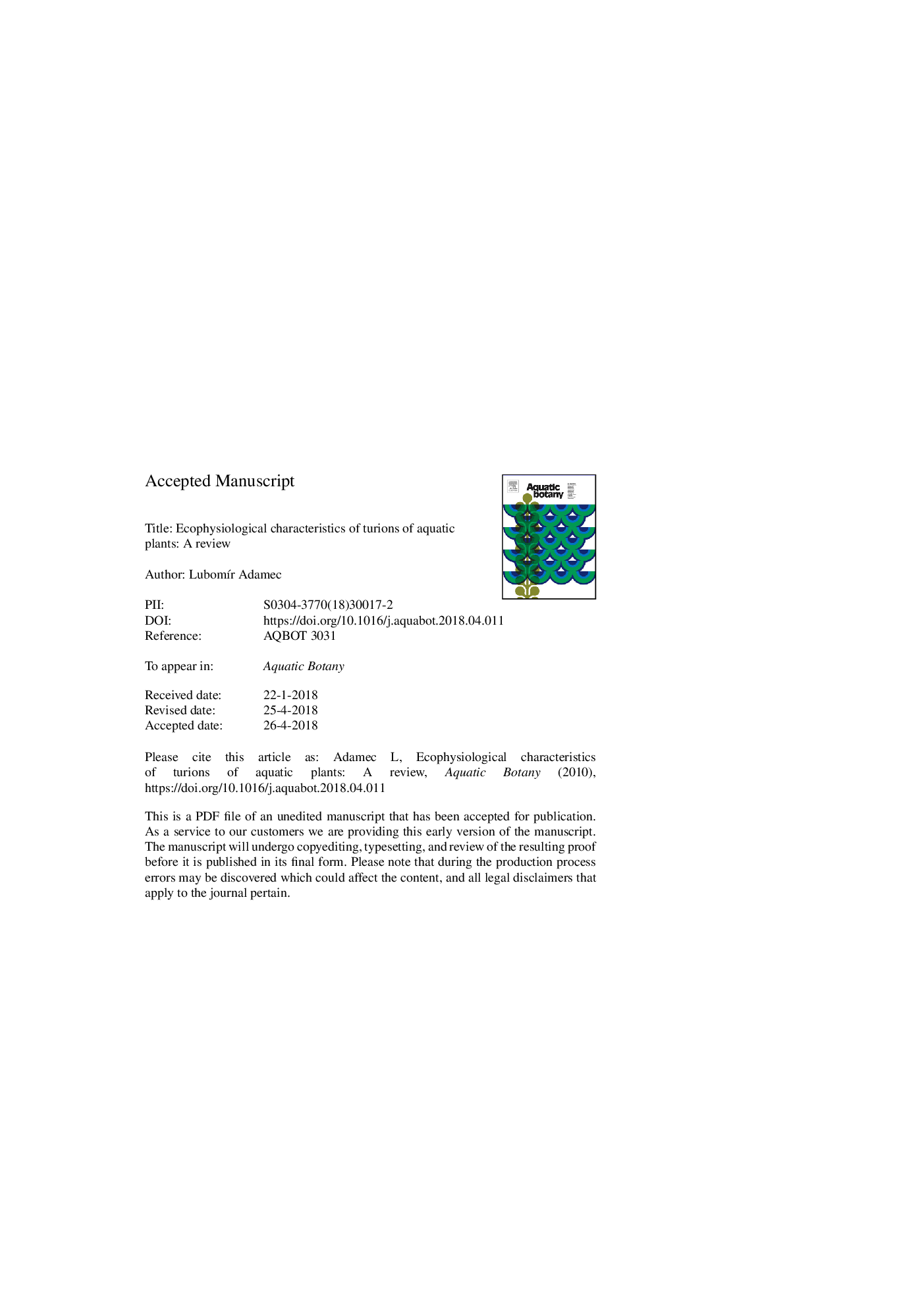| کد مقاله | کد نشریه | سال انتشار | مقاله انگلیسی | نسخه تمام متن |
|---|---|---|---|---|
| 8883573 | 1625794 | 2018 | 40 صفحه PDF | دانلود رایگان |
عنوان انگلیسی مقاله ISI
Ecophysiological characteristics of turions of aquatic plants: A review
دانلود مقاله + سفارش ترجمه
دانلود مقاله ISI انگلیسی
رایگان برای ایرانیان
کلمات کلیدی
ABAIIaPotamogeton crispusGA3DMCindole-3-acetic acid - اسید Indole-3-استیکabscisic acid - اسید آبسزیکbenzyladenine - بنزیل آدنینFormation - تشکیلSprouting - جوانه زدنGermination - جوانه زنیgibberellic acid - جیبرلیک اسیدDormancy - خُفتگیrelative air humidity - رطوبت نسبی هواStructure - ساختار یا سازهMetabolism - متابولیسم dry matter content - محتوای ماده خشکdark respiration rate - نرخ تنفس تیرهnet photosynthetic rate - نرخ فتوسنتزی خالصfresh weight - وزن ترdry weight - وزن خشکEcological characteristics - ویژگی های زیست محیطی
موضوعات مرتبط
علوم زیستی و بیوفناوری
علوم کشاورزی و بیولوژیک
علوم آبزیان
پیش نمایش صفحه اول مقاله

چکیده انگلیسی
Turions or winter/overwintering buds are vegetative, dormant storage organs formed by perennial aquatic plants. They are formed in subtropical to polar zones in response to unfavourable ecological conditions, usually at the beginning of autumn. In this way, fragile shoots of aquatic plants avoid freezing and damage. Turions are formed in at least 14 genera of aquatic vascular plants from nine plant families, mainly in submerged (or amphibious) and free-floating species. Turions are propagules formed by extreme condensation of apical stems (internodes) with modified attached leaves or scales which are dissimilar to summer leaves; they germinate and sprout after they separate from the mother plant. As opposed to pale subterranean rhizome apices, turions contain chlorophyll and sprouting turions are able to photosynthesize, which gives them an ecological advantage. Here I review various aspects and particulars of turion biology - structure, ecological significance, costs and benefits, turion formation, dormancy, germination, sprouting, metabolism and frost tolerance - from an ecophysiological point of view with an emphasis on ecological and biochemical developmental signals of turion formation and germination or sprouting. All turion forming genera and species are included except Spirodela polyrhiza because of the high ecophysiological specificity of this species. Unpublished data are also included. Most of the Potamogeton crispus turions have an inverted environmental regulation of their formation and sprouting as they sustain over the warm summer period in a dormant stage and sprout afterwards (aestivation).
ناشر
Database: Elsevier - ScienceDirect (ساینس دایرکت)
Journal: Aquatic Botany - Volume 148, August 2018, Pages 64-77
Journal: Aquatic Botany - Volume 148, August 2018, Pages 64-77
نویسندگان
LubomÃr Adamec,